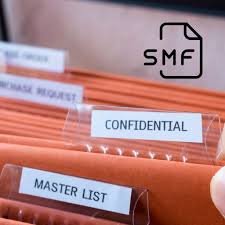Guidelines for Preparation of Site Master File (SMF)

📘 Guidelines for Preparation of Site Master File (SMF)
The Site Master File (SMF) is a regulatory document that provides detailed information about a pharmaceutical manufacturing site, operations, and quality management system. It is required by WHO, EU GMP (Annex 15), PIC/S, and many regulatory agencies.
The SMF should be a concise, factual, and updated document (usually not exceeding 25–30 pages, excluding annexes).
🔹 General Requirements
-
Written in English (or language acceptable to the authority).
-
Signed and approved by the Head of Quality Assurance or Site Head.
-
Reviewed and updated regularly (typically every 1–2 years or after significant changes).
-
Should describe only the site for which it is prepared (not corporate-level details).
🔹 Typical Structure of SMF
1. General Information
-
Brief information on the manufacturer:
-
Company name, site address, contact details.
-
Manufacturing license(s) and GMP certificates.
-
Activities performed (e.g., production, packaging, testing).
-
Products manufactured (categories: sterile, non-sterile, APIs, dosage forms).
-
-
Organization chart showing key personnel.
2. Quality Management System (QMS)
-
Description of the quality management principles applied.
-
Details of:
-
Documentation system (SOPs, policies, controlled documents).
-
Change control and deviation handling.
-
CAPA and risk management.
-
Self-inspections and audits.
-
Product Quality Reviews (APR/PQR).
-
3. Personnel
-
Number of employees in production, QC, QA, engineering.
-
Key responsibilities of senior management.
-
Training and hygiene programs.
4. Premises and Equipment
-
Layout of manufacturing facility (block diagrams or floor plans).
-
HVAC classification and environmental controls.
-
Major equipment (list or summary).
-
Preventive maintenance and calibration practices.
5. Documentation
-
Master documents (BMR, BPR, specifications, SOPs).
-
Electronic data management and data integrity compliance.
6. Production
-
Types of dosage forms manufactured.
-
Manufacturing operations and process flow.
-
In-process controls and line clearance.
-
Cross-contamination controls and material handling.
7. Quality Control
-
Testing facilities available (chemical, microbiological, instrumental).
-
Stability testing program.
-
Reference standard management.
-
Data integrity and audit trail practices.
8. Distribution, Complaints, and Product Recall
-
Distribution system and traceability.
-
Handling of complaints and recalls.
9. Self-Inspection
-
Frequency and scope of internal audits.
10. Annexures
-
List of authorized products.
-
Site and floor plans.
-
Major equipment list.
-
Personnel organogram.
-
List of GMP certificates or approvals.
🔹 Best Practices in Preparing SMF
-
Keep it factual, not promotional.
-
Use flowcharts and diagrams for clarity.
-
Keep annexes for bulky information (equipment list, layouts).
-
Ensure alignment with latest WHO TRS 961 Annex 14 or PIC/S PE 008 guidelines.
✅ Importance of SMF
-
Provides regulators with an overview of the facility.
-
Demonstrates GMP compliance and site readiness.
-
Helps in inspection planning.
-
Useful reference document for audits and quality agreements.
🎓 Discover one of the best Complete Pharmaceutical Quality Assurance Course available —click below to explore the course that’s shaping future in QA Course skills.

